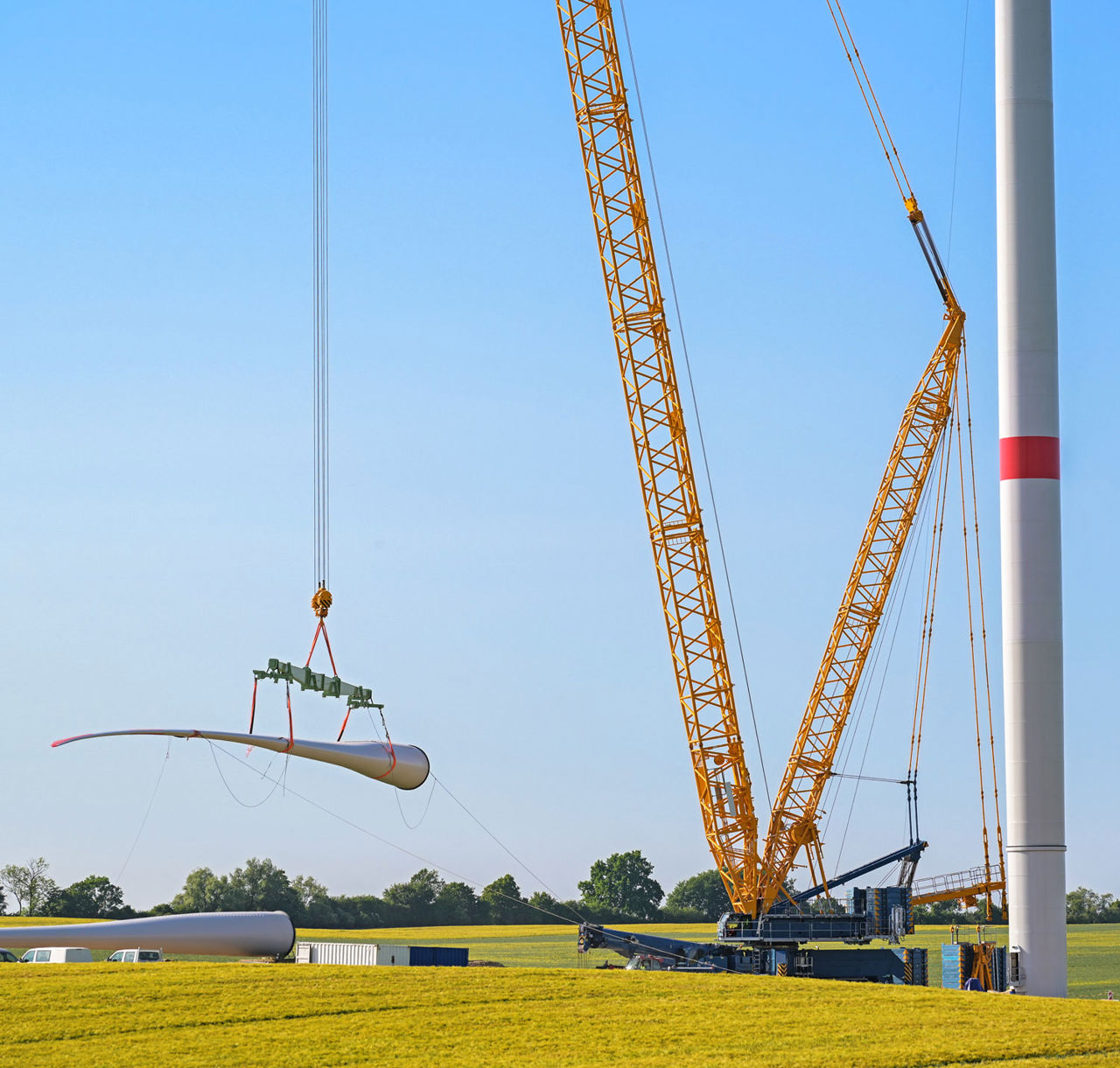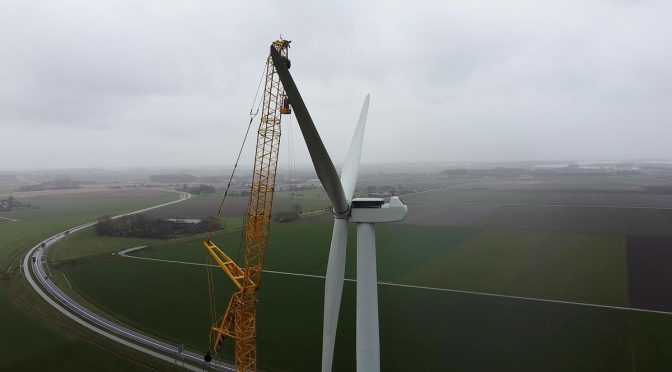How can you get more out of an old wind farm while keeping sustainability in mind? The short answer to this is repowering. Older wind turbines will be replaced by modern, more powerful turbines. By using the newer technology, the output of a wind farm can be drastically increased and we can supply more households with climate-friendly electricity. We explain the detailed answer below.
What is wind repowering and why is it important?
Wind power is one of the fastest growing energy sources in the world, and it has an ace up its sleeve: repowering. Here’s why that’s one of the most important developments in the industry.
A wind turbine can typically operate for about 25 to 30 years. Due to technological advancements and typical wear and tear, these installations often become unprofitable after this period. Repowering gives them a vital new lease of life. Essentially, this entails upgrading or ‘modernising’ existing wind farms to significantly increase their output. The result is that more energy is generated at established sites, and by using existing infrastructure the need for new interventions in nature is considerably reduced.

Benefits of repowering for energy production
Repowering brings many benefits for energy production, namely that modernisation can significantly increase the efficiency and output of the installation.
Other benefits of modernising a wind farm include:
- Increased yield: By using modern and more powerful wind turbines, the yield can be doubled or tripled. For example, old turbines with 1.5 to 2.0 MW can be replaced with turbines of 6 or 7 MW in a wind farm. This way, the output can be doubled but with fewer wind turbines.
- Climate and nature protection: Modern wind turbines are more efficient and can generate more green electricity, contributing to the increased reduction of CO2 emissions locally and globally. Additionally, repowering on an existing site significantly reduces any eventual impact on the surrounding natural location and habitats (a particularly important point considering certain misconceptions regarding wind power’s impact on nature).
- Better use of existing sites: Since many wind turbines are already located at well-suited sites, repowering can maximise the use of wind resources. Again, this also reduces the need for impacting untouched nature.
- Reduction of electricity generation costs: Increased output of modern installations and improved grid compatibility can reduce the costs of wind power generation.
- Value for local municipalities: Extending the lifetime of a wind farm can bring socio-economic benefits to local municipalities, supporting long-term growth and stability for the community. This extension not only supports local jobs but also provides green energy locally. Additionally, it opens other income streams from the wind farm, further boosting the local economy.
- Technological progress: Modern wind turbines not only operate more efficiently, but they also emit less noise and run at a reduced rotational speed.
How does repowering wind farms work?
Although repowering takes place at an already established site, similar planning and approval steps must be taken as with the construction of a new wind farm. These include:
- Planning and approval: Since the new turbines are often larger and more powerful, the locations of the installations within the wind farm often change. This requires a new approval process, similar to a completely new wind farm.
- Decommissioning of old installations: Before the new wind turbines can be installed, the old installations must be completely dismantled. This is done in several steps: First, the logistics considering occupational safety and environmental considerations are planned. The actual decommissioning starts with the removal of the rotor blades, hub, and nacelle, followed by the dismantling of the tower. The underground cabling is removed, and the foundations are also dismantled. Depending on the country where the repowering is taking place, the post-decommissioning process sees components removed and properly disposed of or recycled. The surrounding area not used for the new turbines is then renatured.
- Installation of new wind turbines: Once approval is granted, modern wind turbines are installed.
- Commissioning and optimisation: After installation, the new turbines are commissioned and optimised to achieve maximum yield.
Repowering wind farms as a sustainable solution for more power
Overall, repowering is a more sustainable and efficient solution to advance the energy transition. By replacing old wind turbines with modern, more powerful models, energy yield can be significantly increased. This leads to better utilisation of existing wind resources, and more households can be supplied with environmentally friendly green electricity in the years to come.

